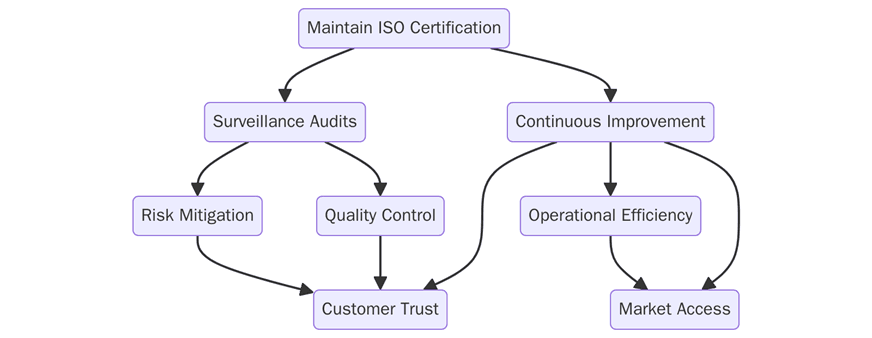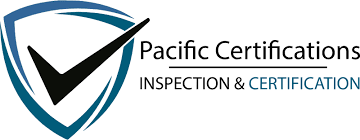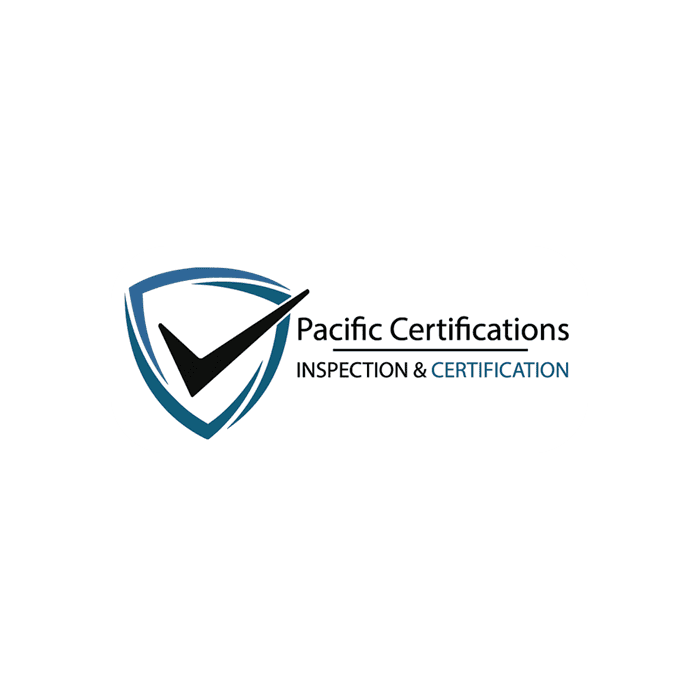Maintaining Your ISO Certification: Surveillance Audits, NCRs, and Continuous Improvement

For an organization, reaching ISO certification is anything but trivial and shows that your organization is following international standards in key areas such as quality management, information security and environmental duty of care. That said, achieving ISO certification is merely the first step on your pathway to success. To ensure that your organization remains certified and keeps improving, it is important to understand the surveillance audit process that comes next as well as how to manage Non-Conformance Reports (NCRs) and how you can create a culture of continuous improvement.
In this blog, we will illustrate how all three will not only help you maintain ISO certification but also help you to keep your organization aligned to ISO standards.
For assistance, contact us at [email protected].
Introduction
ISO certification can deliver many benefits; from improving operational efficiency, to increasing customer satisfaction and elevating credibility from peers in the market. But compliance and improvement are necessary for getting the ISO certification and maintaining compliance, and this is where surveillance audits, NCRs and continuous improvement come into play. Surveillance audits can be conducted once a year or in some cases aged if nothing has changed. NCRs will identify whether you are not meeting status with ISO, and continuous improving gaps opportunity helps businesses remain compliant with ISO and allow for opportunities to improve changes over time.
Surveillance Audits: Ensuring Ongoing Compliance
Audits or surveillance assessments are periodic assessments conducted by certification bodies, to determine if your organization still complies with ISO standards/schemes. These audits are normally conducted on a yearly or bi-yearly basis. They are less overreaching compared to the first certification audit, but they are important in sustaining ISO certification and ensuring your organization stays compliant.
The main reasons for a surveillance audit are to ensure your organization follows the processes and practices under audit at your first certification audit, assess compliance with the ISO standard and regulatory requirements and ensure opportunities exist to identify weaknesses or areas in which the organization can improve processes.
Surveillance audits typically focus on the critical elements of the ISO standard that align with your business’s performance. Some elements may include:
• Document control
• Internal audits
• Corrective actions
• Risk management practices
• Legal and regulatory compliance
What are the Non-Conformance Reports (NCRs)?: Identifying Gaps and Taking Corrective Actions
Auditors are likely to create Non-Conformance Reports (NCRs) during surveillance audits if there are areas where your organization doesn't fully meet ISO. NCRs are formal documents which summarize where your organization's processes or practices are non-compliant with ISO.
Despite NCRs sounding like bad news, they are really good news - they are useful in identifying which areas require action for improvement. In addressing NCRs, you must identify what caused the non-conformance, review your processes, systems or employee training, take action to rectify the issue and install a plan to ensure the issue does not occur again. Actions to rectify an NCR could entail process adjustments, retraining employees or altering policies and procedures. Ensuring that you modify the issues and keep accurate documentation of the actions taken to rectify the non-conformance will show to the auditor that you have addressed the issues and are monitoring the issue for happen again.
For assistance, contact us at [email protected].
Continuous Improvement: The core principle of ISO
Continuous improvement is a core concept of ISO standards. ISO standards, particularly ISO 9001 (Quality Management) and ISO 14001 (Environmental Management), require organizations to assess and investigate their systems, processes, and performance continuously. Continuous improvement is a process of change that helps organizations respond to changes, address risks, and create opportunities for improvement.
The continuous improvement process in ISO standards is often referred to as the Plan-Do-Check-Act (PDCA) cycle:
1. Plan: Identify opportunities for improvement and develop a plan to address them
2. Do: Carry out the plan and implement changes to processes or systems as needed
3. Check: Measure and monitor effectiveness of the changes
4. Act: If the changes are effective, incorporate them into business as usual for your organization
This cycle helps your business improve and adapt naturally, so that you are not only ISO compliant but also continuously working towards operational excellence.
What are the Benefits of maintaining ISO certification through surveillance audits and continuous improvement?
Maintaining ISO certification through surveillance audits, addressing NCRs, and focusing on continuous improvement brings several key benefits for businesses:

• Surveillance audits show your organization is still implementing necessary standards and regulation to avoid potential penalties or legal events.
• By closing NCRs and putting in place systems of continuous improvement, businesses can identify inefficiencies to improve process which can result in savings and resources.
• Regular use of surveillance audits and corrective actions to maintain ISO standards sends a powerful message to customers and stakeholders that your business is committed to quality, security and continual improvement.
• Businesses maintaining ISO certification are committed to standard operating procedure, and a commitment to “best practices” that supports positive reputation and competitive advantage.
• Continuous improvement promotes collaboration and accountability amongst employees as well as giving all employees the ability to bring innovation and philosophy of making things better to the organization.
Contact Us
Pacific Certifications is here to help your organization find the ISO certification process and maintain compliance through ongoing surveillance audits and continuous improvement efforts. Our team of experts can guide you every step of the way, ensuring that your business remains aligned with ISO standards.
For assistance, contact us at [email protected].
Visit our website at www.pacificcert.com.
Ready to get ISO certified?
Contact Pacific Certifications to begin your certification journey today!
Suggested Certifications –
Read more: Pacific Blogs

